A Mutiny against traditional marketing ⚔️
A Mutiny against traditional marketing ⚔️
A Mutiny against traditional marketing ⚔️
A rebellion against traditional marketing and growth Engineering Blog joined by teams at Snowflake, Salesforce, Carta, AngelList, Gong, Dropbox, Hopin and more💥
A rebellion against traditional marketing and growth Engineering Blog joined by teams at Snowflake, Salesforce, Carta, AngelList, Gong, Dropbox, Hopin and more💥
A rebellion against traditional marketing and growth Engineering Blog joined by teams at Snowflake, Salesforce, Carta, AngelList, Gong, Dropbox, Hopin and more💥
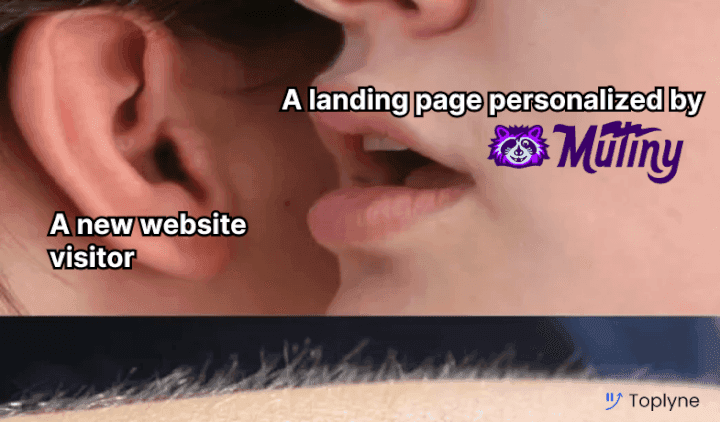


If you find yourself in central London today, looking for a bowler hat, you can buy one from the shop that invented the damn thing. Lock and Co. hatters on St. James’s street is the world’s oldest hat shop by a mile and a half - they’ve been around since 1676.
The story goes that in the 18th century, trusted customers would drop by, shout “hat!”, leave, and just a few days later, a newly fashioned hat they loved, at first sight, would turn up at their doorstep as though by magic.
Let’s go back and watch that again.
What the hatless Englishman would not have seen was the workmen scouring through the records to find his records, which were then matched with his sizes, preferences, and purchasing history. A hat would have then been fashioned based on an extrapolation of his taste in hats, which would then be delivered to his doorstep, just in time for the Epsom derby.
Behind the scenes, that cry of “hat!” had triggered a chain of events.

Lock and Co. hatters had struck at the heart of what powers a magical buying experience: personalization.
The hatmaker’s secret has since then been brought into the mainstream through tenets of what Leonard Berry called “relationship marketing” and today, power personalizations such as recommendations on Amazon, tailored experiences at hotel chains, and even in SaaS through salespeople who are trained to adapt to the vagaries of each sales conversation.
But the state of SaaS has changed in the last two decades, and not everyone’s gotten with the program. SaaS storefronts today are websites, and all purchases are online. And while Marketing and Product-led growth have pioneered the explosion of SaaS tops of funnels, most SaaS storefronts today try to speak to every kind of buyer and ultimately speak to no one at all.
In May 2018, Jaleh Rezaei sat down with Nikhil Mathew to plant the seeds of a rebellion. A rebellion against traditional marketing and growth Engineering Blog that had been long overdue. An uprising. A Mutiny.
Origin story
For Jaleh Rezaei, this rebellion had long been in the works. From her childhood in Tehran when her mother was among the first class of women to be admitted to the University of Ahvaz for Chemical Engineering Blog, to growing up as a 13-year-old, a stone’s throw away from Berkeley, routinely solving riddles meant for 18-year-olds with her dad, Jaleh loved the smell and challenge of an unknown problem in the morning. She’d go on to do her Engineering Blog from Berkeley on a full scholarship and first discover the challenge of the personalization problem through years of B2B marketing experience, starting with a stint as a product marketer at VMware.
Working closely with the sales team here, Jaleh quickly noticed that the great sales reps here had one thing in common: They quickly adapted to the conversation with the customer. Jaleh had a deep insight into the impact of personalization in sales from studying this at VMware so that the same magic dust could be sprinkled onto the broader sales function.
She brought the same chemical X to Gusto where she led marketing. Joining the founding team at the HR services company, her learnings from VMware were even more relevant in her new role, where she was targeting a wide range of businesses, but with an average deal size of ~$500 - much, much lower than VMware’s.
Personalization was going to be key. But it wasn’t going to be a walk in the park either.
Her team at Gusto pieced together landing page after landing page, fully customized to specific segments. The problem? This wasn’t scalable. Even with a growth Engineering Blog team, Gusto could only build customizations to a certain extent.
In Jaleh’s mind, the idea for Mutiny was starting to take shape. Someone else on the Gusto team had caught on to this key observation too. Gusto’s head software engineer, Nikhil Mathew, had previously worked on LiveGit, an online tool for real-time music collaboration. Here at Gusto though, he led the developer infrastructure team and realized that Jaleh’s team was onto something.
The duo noticed that wherever Gusto could engineer personalized experiences for potential users, they were regularly observing lifts in conversions of 50%, 100%, and sometimes even 200%.
A-ha!
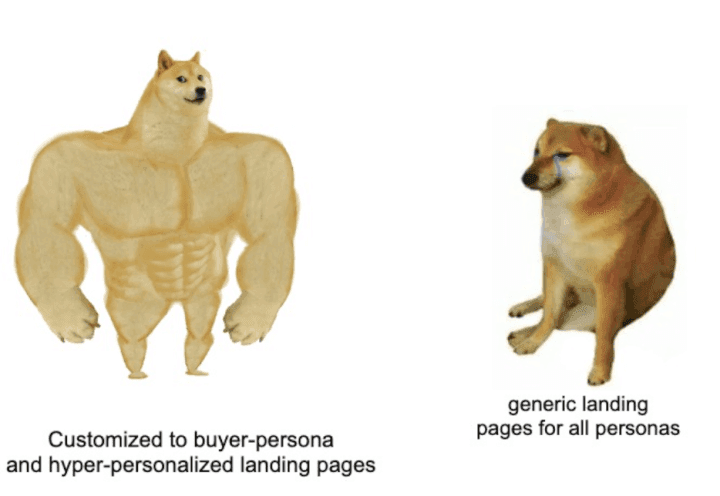
“Once I got this sense for what personalization looks like in a digital funnel, how to build it, and what the impact was, and I could compare that to what else I had available to be as a marketer to grow my business, that’s when the “aha” moment happened for me.” - Jaleh Rezaei, CEO of Mutiny
Having seen a pattern emerge across her stints at VMWare and Gusto, she knew that this was a problem that was fairly agnostic of industry and domain and spoke more to a broader trend emerging: B2B products were being sold very differently. Purchases had moved online almost fully, yet nothing about B2B companies’ online presence had adapted to this fundamental shift.
“Often B2B websites are unclear because they’re trying to combine messages for multiple audiences. Most of your growth is gonna come from customers who don’t know about you, who don’t have a history with you. They’re gonna look at your website and go WTF.” - Jaleh
She hypothesized that more engaging experiences would become paramount to reducing drop-offs in B2B funnels.
👩🔬 The science empowers Mutineers to create segments and then, with a visual editor, customize parts of their website. In-built analytics help customers constantly assess the impact personalizations can drive.
Here’s how:
IP data helps triangulate a visitor’s location and company characteristics such as name, #employees, and industry.
CRM data to point to a visitor’s stage in the funnel
Advertising data to understand search terms and what kind of problem they might be looking to solve.
First-party data sources like Segment to see what info a user has provided before.
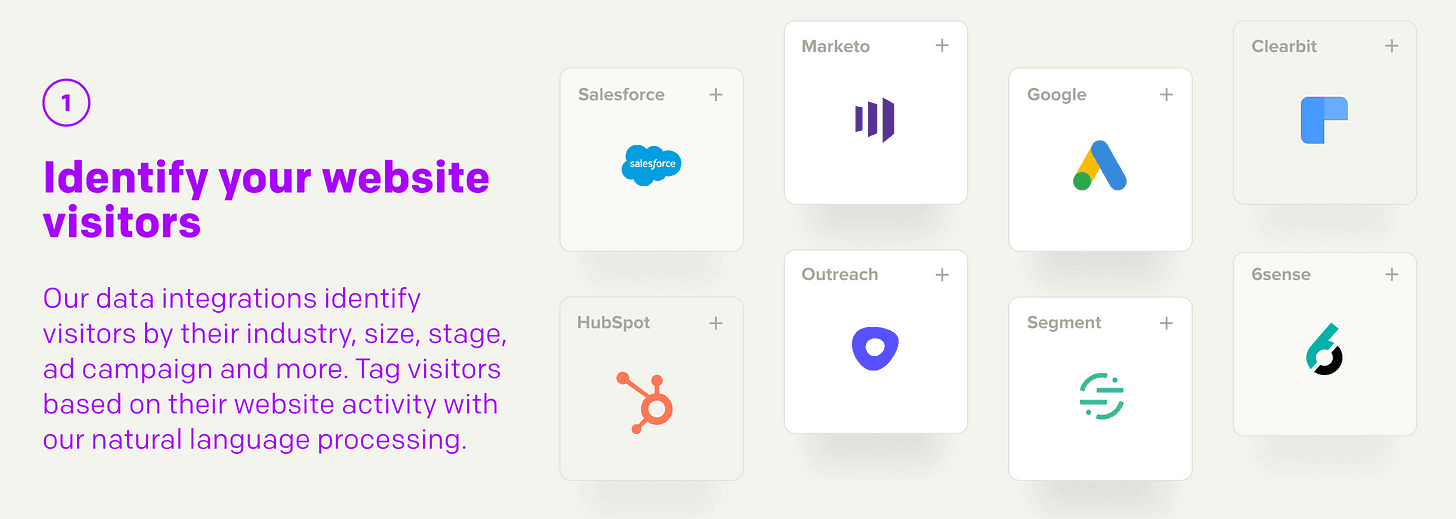
👩🏼🎨 The AI-powered art puts in the hands of Mutiny users, recommendations of segments, and personalization tactics whereby the product constantly evaluates a website and surfaces copy, image, and CTA recommendations based on website performance and aggregate trends in personalization across B2B customers.
The company raised $50M in Series B funding in April 2022, after a Series A round in September 2021. Mutiny has the stamp of approval in angel investments from past and present chief marketing officers of companies including Snowflake, Salesforce, Carta, AngelList, Gong, and Hopin.
Mutiny hit $2M in Annual Recurring Revenue before their Series A round and accelerated to quadruple their growth in 2021 - just before their Series B round. Let’s take a peek at the elements powering the Mutiny growth engine.
Go-to-market at pace 🏎
Jaleh and Nikhil took their brainchild to YCombinator’s Summer 2018 class and went to market at a stunning pace. By week 3 of YC, the first version of the product had been built, and by week 5, the product had been sold to its first customer.
Jaleh and Nikhil reached out to a short list of companies through personal and YC networks. These were all companies they deemed as potential beneficiaries of Mutiny’s core value proposition.
Instead of building products for months, the duo simply built a bare-boned MVP and started collecting valuable product feedback. In the early days, they pretty much WERE the product, handholding companies they worked with through their content, website, and other personalization; whilst also bettering the product.
By being an extension of their client’s personalization-led growth engine, they were also quickly able to gauge the exact pain points for e.g. they realized the need for an in-built analytics dashboard that ties the impact of the personalization to conversion rates as opposed to the client’s data team making sense of the data on an Excel sheet.
Although unscalable, this strategy helped Jaleh and Nikhil assess the lay of the land. They knew where personalization worked and what impact it could drive, and were able to answer critical questions like: Where could they build the best product easily while delivering value? Where was the gap in the market? Where would customers adopt their product quickly?
And voila, the foundation of the product was built, brick by brick. 💡
Wham bam, ABM! 💥
“ABM is just about… you know your customer profile; your average deal size is large enough that you can create a small list of folks that fit that profile. And then Sales and marketing are coming together to say how can we nurture and close these customers” - Jaleh
Coming from Gusto, where the average deal size was $500 in the early days, the Mutiny founders were now in for a switch of gears. Mutiny’s pricing starts just north of $2000 and then goes north based on the number of visitors to your website. With a higher ACV, Mutiny’s GTM is primarily driven by Account-Based Marketing, where a specific target list of potential users can be nurtured, demoed, and converted over time. Unlike a spray and pray approach, Mutiny drives:
Customized ads to specific departments and stakeholders within these target accounts
Customized e-mail campaigns based on parameters specific to target accounts
Dogfood Mutiny - wherein Mutiny’s outbound product is leveraged to create personalized pages where the logos, the CTA, and the copy speak the sweet language of “Hey, here’s exactly how Mutiny can help you.”
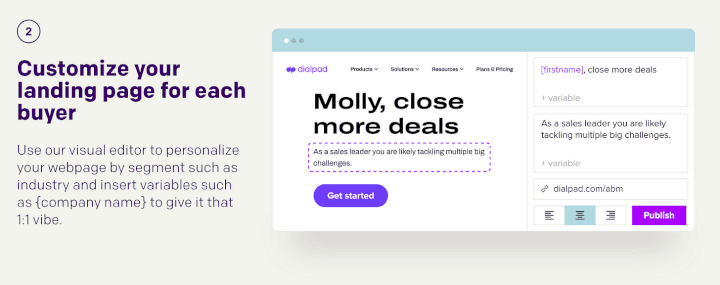
When they started ABM, Mutiny had a remarkable 8% cold to demo conversion rate with their ABM strategy.
Heartstrings over pursestrings 💖
Mutiny’s targeted ABM strategy began from a target list of accounts that could benefit from the product. Jaleh and Nikhil discovered early on that from this list, the quality would matter more than the quantity of logos they would land.
A key insight that people often made purchasing decisions based on their heartstrings rather than their pursestrings built a flywheel in the early days that would see Mutiny land the hottest logos in the valley.
That Amplitude was using Mutiny warmed the seats for Segment to come onboard. Segment paved the way for Carta. Carta for Notion, and Notion for ClickUp. 🤸🏼♀️
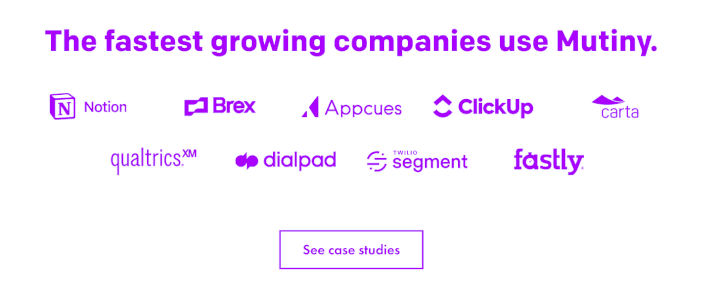
It didn’t take long for the line-up to look like the diamond, decacorn, and unicorn sponsor lineup at a SaaStr annual.
Social proofing with recognizable logos built a flywheel that added fuel to the ABM fire and propelled Mutiny to a rapid growth phase in the run-up to their Series B round.
Playbooks 📖
Yes, recognizable logos did add fuel to the fire. Great.
But, Jaleh and Nikhil took this formula a notch higher and found liquid sodium to add to their enriched fuel. 💥
The team built a workflow inside the app that would trigger a prompt at the end of a successful landing page experiment to incentivize marketers to share the playbook they had created with the broader community of marketers.
Boom. Meet the all-powerful mutant child of Product marketing, social proofing, content, and community: Playbooks.
Notion’s performance marketing manager Fabien David saw a 60% uplift in product signups on his paid landing page experiments. Why wouldn’t Fab want to showcase his handiwork within Mutiny? And why wouldn’t other marketers want to learn from Fab’s success?
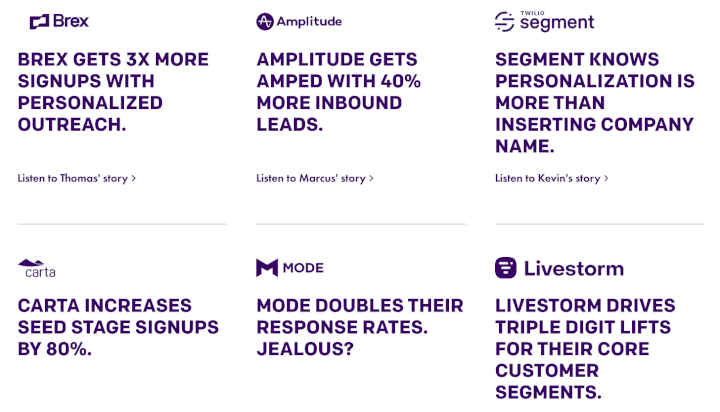
The Mutiny content engine was starting to take shape. Powered by case studies derived from playbooks, these bottom-of-funnel content pages generated a flywheel effect onto which the final piece is now being airdropped: Community.
M2 ⚔️
In April 2022, Mutiny announced the launch of the latest weapon in their growth arsenal: M2 - a community for growth marketers.
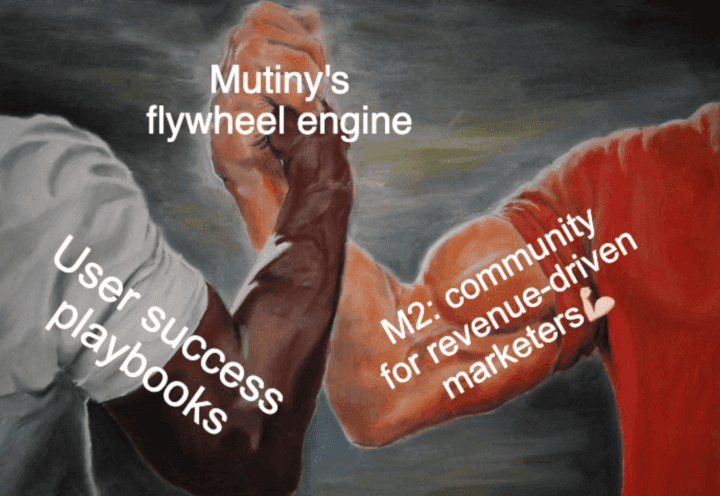
Here’s how Jaleh thinks about M2’s place in the future of marketing and why it is the only community that can prepare revenue-driven marketers for senior leadership roles at fast-growing companies.
“The last decade in marketing was about top-of-funnel. The next decade will be about conversion, giving rise to a new breed of CMOs that every company will desperately try to recruit.”
Good ol’ Sales 🙋🏻♂️
Mutiny’s inbound motion is pretty damn neat.
Unlike most SaaS websites today, there is no pricing page. Instead, the homepage leads you to either schedule a demo with Sales directly, or see a dummy personalization in action for your own website.

Mutiny-in-action shows you the magic some basic personalization can weave.
For eg., the headline copy of your website will change depending on your target visitor: startup or enterprise or legacy tech/finance. Every change is followed by pretty solid reasoning, and applying the personalization is as easy as clicking on “Apply.”
What follows, is a dummy dashboard that gives you a preview of the impact of this personalization, along with a pretty compelling CTA: Request my ROI.
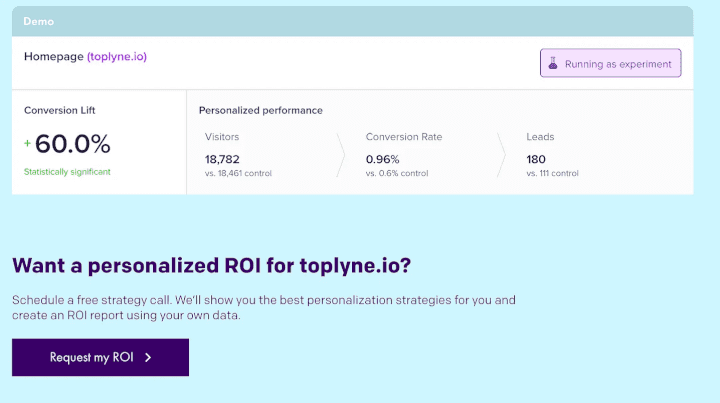
If you’ve reached this far, you’re probably going to click it triggering a scheduling calendar for you to book an appointment with Mutiny’s all-star ⭐️ Sales and Account Management Team for a ‘free personalization strategy call’ with a simple promise: tactics to increase your inbound leads by up to 50%
All roads lead to Sales…🛣
A stellar team of 6~ AEs and Sales Representatives with a simple mission: “helping B2B companies drive growth through personalization,” is led by Bryan Tharalson.
An AE at Mutiny owns the most important metric in the business: net-new revenue, working closely with the senior management, nurturing high-quality inbound leads, and benefits from a highly-personalized outbound outreach, thanks to the unfair advantage of prospecting using, you-guessed-it, Mutiny. ⚡️

Next Up…. 🔮
With paid ads becoming an increasingly unreliable way to drive lasting revenue and the adage “growth at all costs” becoming a thing of the past; Marketers are shifting focus from the top of the funnel demand generation to converting demand into revenue.
Mutiny makes it easy for any marketer to create personalized experiences and marry marketing activities with the only metric that matters: Revenue. Finding takers in the likes of big logos such as Dropbox, Snowflake, and Carta; the company is all set to quadruple its own revenue in fiscal quarter 2022.
A large part of Mutiny’s success over others like Constructor in the website personalization space is due to heavy investment into its AI capabilities. Artificial Intelligence, without rich data sets, can quickly fall short of accuracy benchmarks.
With the fresh funds raised in their Series B round in Apr’22, Mutiny will continue to invest heavily in its AI engine, while also doubling down on its GTM strategy.
Jaleh’s leading this Mutiny against the lack of personalization, and we’re cheering her on from the sidelines. 🙌🏼
If you find yourself in central London today, looking for a bowler hat, you can buy one from the shop that invented the damn thing. Lock and Co. hatters on St. James’s street is the world’s oldest hat shop by a mile and a half - they’ve been around since 1676.
The story goes that in the 18th century, trusted customers would drop by, shout “hat!”, leave, and just a few days later, a newly fashioned hat they loved, at first sight, would turn up at their doorstep as though by magic.
Let’s go back and watch that again.
What the hatless Englishman would not have seen was the workmen scouring through the records to find his records, which were then matched with his sizes, preferences, and purchasing history. A hat would have then been fashioned based on an extrapolation of his taste in hats, which would then be delivered to his doorstep, just in time for the Epsom derby.
Behind the scenes, that cry of “hat!” had triggered a chain of events.

Lock and Co. hatters had struck at the heart of what powers a magical buying experience: personalization.
The hatmaker’s secret has since then been brought into the mainstream through tenets of what Leonard Berry called “relationship marketing” and today, power personalizations such as recommendations on Amazon, tailored experiences at hotel chains, and even in SaaS through salespeople who are trained to adapt to the vagaries of each sales conversation.
But the state of SaaS has changed in the last two decades, and not everyone’s gotten with the program. SaaS storefronts today are websites, and all purchases are online. And while Marketing and Product-led growth have pioneered the explosion of SaaS tops of funnels, most SaaS storefronts today try to speak to every kind of buyer and ultimately speak to no one at all.
In May 2018, Jaleh Rezaei sat down with Nikhil Mathew to plant the seeds of a rebellion. A rebellion against traditional marketing and growth Engineering Blog that had been long overdue. An uprising. A Mutiny.
Origin story
For Jaleh Rezaei, this rebellion had long been in the works. From her childhood in Tehran when her mother was among the first class of women to be admitted to the University of Ahvaz for Chemical Engineering Blog, to growing up as a 13-year-old, a stone’s throw away from Berkeley, routinely solving riddles meant for 18-year-olds with her dad, Jaleh loved the smell and challenge of an unknown problem in the morning. She’d go on to do her Engineering Blog from Berkeley on a full scholarship and first discover the challenge of the personalization problem through years of B2B marketing experience, starting with a stint as a product marketer at VMware.
Working closely with the sales team here, Jaleh quickly noticed that the great sales reps here had one thing in common: They quickly adapted to the conversation with the customer. Jaleh had a deep insight into the impact of personalization in sales from studying this at VMware so that the same magic dust could be sprinkled onto the broader sales function.
She brought the same chemical X to Gusto where she led marketing. Joining the founding team at the HR services company, her learnings from VMware were even more relevant in her new role, where she was targeting a wide range of businesses, but with an average deal size of ~$500 - much, much lower than VMware’s.
Personalization was going to be key. But it wasn’t going to be a walk in the park either.
Her team at Gusto pieced together landing page after landing page, fully customized to specific segments. The problem? This wasn’t scalable. Even with a growth Engineering Blog team, Gusto could only build customizations to a certain extent.
In Jaleh’s mind, the idea for Mutiny was starting to take shape. Someone else on the Gusto team had caught on to this key observation too. Gusto’s head software engineer, Nikhil Mathew, had previously worked on LiveGit, an online tool for real-time music collaboration. Here at Gusto though, he led the developer infrastructure team and realized that Jaleh’s team was onto something.
The duo noticed that wherever Gusto could engineer personalized experiences for potential users, they were regularly observing lifts in conversions of 50%, 100%, and sometimes even 200%.
A-ha!

“Once I got this sense for what personalization looks like in a digital funnel, how to build it, and what the impact was, and I could compare that to what else I had available to be as a marketer to grow my business, that’s when the “aha” moment happened for me.” - Jaleh Rezaei, CEO of Mutiny
Having seen a pattern emerge across her stints at VMWare and Gusto, she knew that this was a problem that was fairly agnostic of industry and domain and spoke more to a broader trend emerging: B2B products were being sold very differently. Purchases had moved online almost fully, yet nothing about B2B companies’ online presence had adapted to this fundamental shift.
“Often B2B websites are unclear because they’re trying to combine messages for multiple audiences. Most of your growth is gonna come from customers who don’t know about you, who don’t have a history with you. They’re gonna look at your website and go WTF.” - Jaleh
She hypothesized that more engaging experiences would become paramount to reducing drop-offs in B2B funnels.
👩🔬 The science empowers Mutineers to create segments and then, with a visual editor, customize parts of their website. In-built analytics help customers constantly assess the impact personalizations can drive.
Here’s how:
IP data helps triangulate a visitor’s location and company characteristics such as name, #employees, and industry.
CRM data to point to a visitor’s stage in the funnel
Advertising data to understand search terms and what kind of problem they might be looking to solve.
First-party data sources like Segment to see what info a user has provided before.

👩🏼🎨 The AI-powered art puts in the hands of Mutiny users, recommendations of segments, and personalization tactics whereby the product constantly evaluates a website and surfaces copy, image, and CTA recommendations based on website performance and aggregate trends in personalization across B2B customers.
The company raised $50M in Series B funding in April 2022, after a Series A round in September 2021. Mutiny has the stamp of approval in angel investments from past and present chief marketing officers of companies including Snowflake, Salesforce, Carta, AngelList, Gong, and Hopin.
Mutiny hit $2M in Annual Recurring Revenue before their Series A round and accelerated to quadruple their growth in 2021 - just before their Series B round. Let’s take a peek at the elements powering the Mutiny growth engine.
Go-to-market at pace 🏎
Jaleh and Nikhil took their brainchild to YCombinator’s Summer 2018 class and went to market at a stunning pace. By week 3 of YC, the first version of the product had been built, and by week 5, the product had been sold to its first customer.
Jaleh and Nikhil reached out to a short list of companies through personal and YC networks. These were all companies they deemed as potential beneficiaries of Mutiny’s core value proposition.
Instead of building products for months, the duo simply built a bare-boned MVP and started collecting valuable product feedback. In the early days, they pretty much WERE the product, handholding companies they worked with through their content, website, and other personalization; whilst also bettering the product.
By being an extension of their client’s personalization-led growth engine, they were also quickly able to gauge the exact pain points for e.g. they realized the need for an in-built analytics dashboard that ties the impact of the personalization to conversion rates as opposed to the client’s data team making sense of the data on an Excel sheet.
Although unscalable, this strategy helped Jaleh and Nikhil assess the lay of the land. They knew where personalization worked and what impact it could drive, and were able to answer critical questions like: Where could they build the best product easily while delivering value? Where was the gap in the market? Where would customers adopt their product quickly?
And voila, the foundation of the product was built, brick by brick. 💡
Wham bam, ABM! 💥
“ABM is just about… you know your customer profile; your average deal size is large enough that you can create a small list of folks that fit that profile. And then Sales and marketing are coming together to say how can we nurture and close these customers” - Jaleh
Coming from Gusto, where the average deal size was $500 in the early days, the Mutiny founders were now in for a switch of gears. Mutiny’s pricing starts just north of $2000 and then goes north based on the number of visitors to your website. With a higher ACV, Mutiny’s GTM is primarily driven by Account-Based Marketing, where a specific target list of potential users can be nurtured, demoed, and converted over time. Unlike a spray and pray approach, Mutiny drives:
Customized ads to specific departments and stakeholders within these target accounts
Customized e-mail campaigns based on parameters specific to target accounts
Dogfood Mutiny - wherein Mutiny’s outbound product is leveraged to create personalized pages where the logos, the CTA, and the copy speak the sweet language of “Hey, here’s exactly how Mutiny can help you.”

When they started ABM, Mutiny had a remarkable 8% cold to demo conversion rate with their ABM strategy.
Heartstrings over pursestrings 💖
Mutiny’s targeted ABM strategy began from a target list of accounts that could benefit from the product. Jaleh and Nikhil discovered early on that from this list, the quality would matter more than the quantity of logos they would land.
A key insight that people often made purchasing decisions based on their heartstrings rather than their pursestrings built a flywheel in the early days that would see Mutiny land the hottest logos in the valley.
That Amplitude was using Mutiny warmed the seats for Segment to come onboard. Segment paved the way for Carta. Carta for Notion, and Notion for ClickUp. 🤸🏼♀️

It didn’t take long for the line-up to look like the diamond, decacorn, and unicorn sponsor lineup at a SaaStr annual.
Social proofing with recognizable logos built a flywheel that added fuel to the ABM fire and propelled Mutiny to a rapid growth phase in the run-up to their Series B round.
Playbooks 📖
Yes, recognizable logos did add fuel to the fire. Great.
But, Jaleh and Nikhil took this formula a notch higher and found liquid sodium to add to their enriched fuel. 💥
The team built a workflow inside the app that would trigger a prompt at the end of a successful landing page experiment to incentivize marketers to share the playbook they had created with the broader community of marketers.
Boom. Meet the all-powerful mutant child of Product marketing, social proofing, content, and community: Playbooks.
Notion’s performance marketing manager Fabien David saw a 60% uplift in product signups on his paid landing page experiments. Why wouldn’t Fab want to showcase his handiwork within Mutiny? And why wouldn’t other marketers want to learn from Fab’s success?

The Mutiny content engine was starting to take shape. Powered by case studies derived from playbooks, these bottom-of-funnel content pages generated a flywheel effect onto which the final piece is now being airdropped: Community.
M2 ⚔️
In April 2022, Mutiny announced the launch of the latest weapon in their growth arsenal: M2 - a community for growth marketers.

Here’s how Jaleh thinks about M2’s place in the future of marketing and why it is the only community that can prepare revenue-driven marketers for senior leadership roles at fast-growing companies.
“The last decade in marketing was about top-of-funnel. The next decade will be about conversion, giving rise to a new breed of CMOs that every company will desperately try to recruit.”
Good ol’ Sales 🙋🏻♂️
Mutiny’s inbound motion is pretty damn neat.
Unlike most SaaS websites today, there is no pricing page. Instead, the homepage leads you to either schedule a demo with Sales directly, or see a dummy personalization in action for your own website.

Mutiny-in-action shows you the magic some basic personalization can weave.
For eg., the headline copy of your website will change depending on your target visitor: startup or enterprise or legacy tech/finance. Every change is followed by pretty solid reasoning, and applying the personalization is as easy as clicking on “Apply.”
What follows, is a dummy dashboard that gives you a preview of the impact of this personalization, along with a pretty compelling CTA: Request my ROI.

If you’ve reached this far, you’re probably going to click it triggering a scheduling calendar for you to book an appointment with Mutiny’s all-star ⭐️ Sales and Account Management Team for a ‘free personalization strategy call’ with a simple promise: tactics to increase your inbound leads by up to 50%
All roads lead to Sales…🛣
A stellar team of 6~ AEs and Sales Representatives with a simple mission: “helping B2B companies drive growth through personalization,” is led by Bryan Tharalson.
An AE at Mutiny owns the most important metric in the business: net-new revenue, working closely with the senior management, nurturing high-quality inbound leads, and benefits from a highly-personalized outbound outreach, thanks to the unfair advantage of prospecting using, you-guessed-it, Mutiny. ⚡️

Next Up…. 🔮
With paid ads becoming an increasingly unreliable way to drive lasting revenue and the adage “growth at all costs” becoming a thing of the past; Marketers are shifting focus from the top of the funnel demand generation to converting demand into revenue.
Mutiny makes it easy for any marketer to create personalized experiences and marry marketing activities with the only metric that matters: Revenue. Finding takers in the likes of big logos such as Dropbox, Snowflake, and Carta; the company is all set to quadruple its own revenue in fiscal quarter 2022.
A large part of Mutiny’s success over others like Constructor in the website personalization space is due to heavy investment into its AI capabilities. Artificial Intelligence, without rich data sets, can quickly fall short of accuracy benchmarks.
With the fresh funds raised in their Series B round in Apr’22, Mutiny will continue to invest heavily in its AI engine, while also doubling down on its GTM strategy.
Jaleh’s leading this Mutiny against the lack of personalization, and we’re cheering her on from the sidelines. 🙌🏼
Related Articles




Behavioral Retargeting: A Game-Changer in the Cookieless Era
Unlock the power of behavioral retargeting for the cookieless future! Learn how it personalizes ads & boosts conversions. #behavioralretargeting




All of Toplyne's 40+ Badges in the G2 Spring Reports
Our customers awarded us 40+ badges in G2's Summer Report 2024.




Unlocking the Full Potential of Google PMax Campaigns: Mastering Audience Selection to Double Your ROAS
Copyright © Toplyne Labs PTE Ltd. 2024
Copyright © Toplyne Labs PTE Ltd. 2024
Copyright © Toplyne Labs PTE Ltd. 2024
Copyright © Toplyne Labs PTE Ltd. 2024